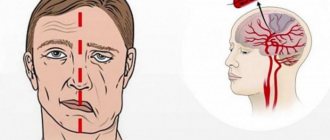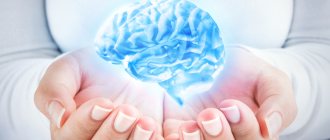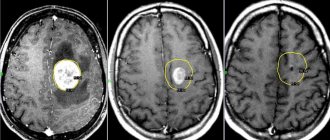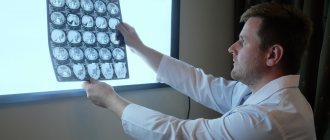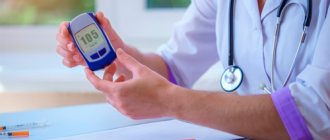Strengthening blood vessels and capillaries with folk remedies is an additional treatment for circulatory disorders and the integrity of brain vessels. Traditional medicine is not the main treatment (for example, IVs for blood vessels) and does not replace drug therapy, which is placed first in eliminating the causes and symptoms of circulatory and vascular diseases.
You can strengthen your arteries at home with the help of exercise, proper nutrition, traditional medicine and vitamins. These methods not only influence the stabilization of blood circulation, but also have a general strengthening effect on the body, increasing its resistance to stress and resistance to hypothermia, high temperatures, nonspecific infectious diseases and sudden weather changes.
Indications
In what cases should blood vessels be strengthened:
- Acute cerebrovascular accidents: hemorrhagic and ischemic strokes, subarachnoid hemorrhage, transient ischemic attack.
- Chronic brain diseases caused by disorders: vascular encephalopathy, vascular dementia, cerebral atherosclerosis.
- Suffered traumatic brain injuries.
- Nonspecific cerebral symptoms: chronic headaches, dizziness, exhaustion, irritability, sleep disturbances, tinnitus, decreased visual acuity, depression, decreased performance, loss of interest in previous activities and hobbies.
- Diseases affecting the integrity of cerebral vessels: diabetes mellitus, arterial hypertension, angiopathy.
- Post-intoxication conditions caused by long-term alcohol intake, infections, drug addiction or foodborne toxic infections.
Prevention of vascular diseases of the brain.
Vascular diseases of the brain continue to be the most important medical and social problem, which is due to their high share in the structure of morbidity and mortality of the population, significant rates of temporary labor losses and primary disability. In Russia, the incidence of vascular pathology of the brain is estimated at 350-400 people per 100 thousand population. Mortality from vascular diseases of the brain in our country ranks second in the structure of overall mortality, not much inferior to mortality from cardiovascular diseases. Mortality in the acute stage of all types of stroke is approximately 35%, increasing by 12-15% by the end of the first year. Disability due to stroke ranks first among all causes of primary disability. Primary prevention is of primary importance in reducing morbidity, mortality and disability due to cerebrovascular diseases. But first we need to find out what risk factors lead to the development of strokes.
- Arterial hypertension. Persistent and difficult to correct with drugs high blood pressure from 160/90 mm Hg. Art. increases the possibility of stroke by 4 times, and at a pressure of 200/110 mm Hg. Art. 10 times. In this case, changes occur in the walls of blood vessels, as a result of which their rupture may occur.
- Heart rhythm disturbances. With atrial fibrillation, blood hemodynamics are disrupted. Blood clots that form in the cavities of the heart muscle rush into other vessels and are a common cause of stroke. As a rule, the disease caused by this cause is characterized by severity and a negative prognosis.
- Diabetes. Violation of the real properties of blood and changes in the vascular wall with this disease occur 5 times more often.
- Atherosclerosis of cerebral vessels. Physical inactivity and poor diet lead to the development of obesity and increased cholesterol levels in the blood. High lipid levels are directly related to circulatory problems.
- Increased blood viscosity.
- Smoking. Promotes accelerated formation of atherosclerotic changes in the carotid arteries, which causes a 2-fold increase in the possibility of vascular accident.
- Alcohol. Regular intake of large doses increases the risk by 3 times.
To know your health indicators, you need to undergo an examination once a year, even if nothing worries you.
The main methods used in medical institutions:
- General blood test for glucose, lipoproteins and cholesterol, prothrombin index, fibrinogen. These substances affect the functioning of the heart and blood vessels.
- ECG – records the electrical potentials of the beating heart, allows to identify initial signs of overload, rhythm changes, electrolyte deficiency, ischemia of individual zones.
- Doppler ultrasound - indicates insufficient blood supply to the brain; blood flow in the vessels of the neck and head is assessed.
- Ultrasound of the heart - this method allows you to visually view the contractions of the heart muscle, the condition of the heart valves, measure the magnitude and direction of blood flow, and identify heart failure.
- MTR of cerebral vessels - shows the lumen and patency of large vessels, compliance with anatomical dimensions, anomalies of vascular development.
There are primary and secondary prevention. Primary prevention includes maintaining a healthy lifestyle. A healthy diet, minimal intake of salts and fats, emphasis on fruits and vegetables, and it is advisable to have vegetarian days at least once a week. Consume calories in accordance with the body's energy expenditure. It is highly undesirable to consume alcohol and cigarettes. Proper organization of the daily routine: time for work, rest and sleep. Sleep at least seven hours a day. Weekends should be spent actively: cycling, skating, walking, running, Nordic walking - all this will keep your vascular tone normal. Knowledge workers typically lead a sedentary lifestyle. It is advisable for such people to get to work on foot, get up from their workplace at least once an hour, do exercises or walk. It is advisable to take “oxygen breaks” - walks in the fresh air, which promote better brain activity. You need to avoid stress, or resort to a proven method: if you cannot change the situation, change your attitude towards it. Excessive anxiety can cause hypertension. If a person is not mentally occupied, then one must try to strain the brain, since otherwise memory and thinking disorders may progress. To do this, you can use crosswords, solving puzzles, and memorizing poetry. And the emphasis is not on the amount of information, but on remembering it. Listening to your favorite music and traveling have a positive effect on the brain. Memory is like a muscle; if you use it intensively, it will grow and become stronger.
Secondary prevention is carried out in people with identified diseases and in patients who have had a stroke. Timely treatment of identified diseases prevents life-threatening complications. Treatment of high blood pressure and heart pain is carried out by a local doctor in consultation with a cardiologist. If necessary, hospitalization and selection of necessary medications in a hospital setting are indicated. Doctors prescribe medications to lower cholesterol, blood glucose, and reduce clotting. There are quite a lot of these drugs; only a doctor can choose the one indicated for a specific person.
For patients who have had a stroke or transient ischemic attack, it is recommended:
1. Rehabilitation measures with a slow increase in physical activity (physical therapy, massage, walks in the air).
2. Complete cessation of habits that contribute to the development of the disease (smoking, alcohol, drug addiction).
3. Diet with limited cholesterol-rich foods.
4. Losing body weight.
5. The use of drugs that reduce the likelihood of blood clots.
6. Antihypertensive therapy.
7. Surgical correction of cerebral vessel patency.
Thus, the prevention of strokes consists, first of all, in maintaining a healthy lifestyle. Timely prevention can prevent the development of strokes in 80% of cases. Take care and love yourself.
Neurologist E.V. Sokolova.
1. Rehabilitation measures with a slow increase in physical activity (physical therapy, massage, walks in the air). 2. Complete cessation of habits that contribute to the development of the disease (smoking, alcohol, drug addiction). 3. Diet with limited cholesterol-rich foods. 4. Losing body weight. 5. The use of drugs that reduce the likelihood of blood clots. 6. Antihypertensive therapy. 7. Surgical correction of cerebral vessel patency.
Physical training
Exercises, their specificity, severity and frequency depend on the type of cerebrovascular accident. For example, physical therapy begins 5 days after a hemorrhagic stroke. So, below is a list of exercises, but they should not be performed without consulting your doctor: any incorrectly performed exercise or normal movement increases the risk of a recurrent stroke. Exercises to strengthen blood vessels are complex and performed for the whole body.
Exercises in a lying position:
- On the back. It is necessary to move your eyes from side to side: left-right and down-up. The same must be done with your eyes closed. The exercise consists of 4 approaches, between which there is a ten-second rest. For example, 4 turns to the sides with open eyes, 4 turns with eyes closed and rest for 10 seconds. This must be repeated 7-8 times.
- On the back. This exercise develops blood flow in the neck muscles and improves blood supply to the brain. You need to move your head left-right and down-up. The number of approaches and repetitions is the same as the previous exercise.
- On the back. Alternately bend and straighten your legs at the knee joints, the same applies to the elbows. 10 times for each limb.
Standing position. Standing exercises are performed by patients whose general condition is satisfactory and the previous exercises are easy for them:
- Feet shoulder width apart. Hands on the belt. Turn your torso left and right, then spread your arms to the sides and take a deep breath, put your hands on your belt again. Repeat the same algorithm. Number of repetitions – 5 times.
- Squats. Straighten your arms in front of you. Feet shoulder width apart. Squat down and keep your heels off the surface. Lean your torso forward slightly and take a deep breath. Rise up slowly. Repeat this cycle of actions 6 times.
- Tilts. Place your legs at your sides and place your hands on your waist. Tilt to the left and simultaneously raise your right arm up, inhale deeply. Return to the starting position and exhale. Repeat the cycle of actions 4 times.
- Lunges. Place your feet shoulder-width apart and your hands on your waist. Extend your right arm forward and step forward with your left foot, clench your fingers into a fist and place them on your shoulders. Return to the starting position. Repeat the exercise 4 times.
Pharmacy products
Discirculatory encephalopathy is a disease of brain tissue that appears as a result of vascular pathologies. In the early stages, the disease can be cured. You can take medications for this. They have different effects, for example, reducing tissue permeability and improving elasticity. Medicines are sold in different forms. You should take medications only as prescribed by your doctor. Some of the most popular and proven include:
- capillary stabilizers (Taxifolin). Reduce the permeability of the walls of blood vessels, preventing their fragility, and have an antioxidant effect;
- cardiotonic (Adonizide). Improves the functioning of the heart muscles and has a mild sedative effect;
- nootropic (Phenotropil). Improve brain function, memory, increase performance;
- angioprotectors (Escuzan). Improve the lumen of blood vessels and their resistance to negative external influences, normalize metabolic processes;
- normalizing blood circulation (Dibazol, Validol). They have a relaxing effect on the heart muscles, lower blood pressure, and stabilize metabolism.
- antispasmodics and vasodilators (Cavinton). The lumen of blood vessels increases, preventing the possibility of spasms.
Nutrition
Products for strengthening blood vessels:
- Walnuts and almonds. They contain magnesium. Indications: nutrition to strengthen blood vessels and lower cholesterol. Used for atherosclerosis.
- Strawberries, cherries, cherries, raspberries and currants. The fruits contain vitamins, potassium, calcium. In addition to strengthening the walls of blood vessels, they tone the nervous system.
- Garlic. It contains hydrogen sulfide and nitric oxide. These compounds are indicated for vascular lesions caused by high blood pressure.
- Cereals. They lower cholesterol levels. It is recommended to cook buckwheat and oatmeal porridge. Cereals, in addition to reducing bad fats, contain fiber - it is useful for digestion.
- Grapefruit. The citrus plant contains vitamins B, A, PP, C and minerals: potassium, magnesium, zinc, phosphorus, copper, iodine and fluorine. These substances strengthen the walls of blood vessels.
- Avocado. Its properties are used for therapeutic diets for atherosclerosis, lowering low and very low density lipoproteins.
- Legumes. Contains fiber and iron, magnesium and folic acid. Indicated for arterial hypertension and specific digestive disorders.
Why is it important to strengthen blood vessels?
Problems with blood circulation in the initial stages go unnoticed. Alarming symptoms include headaches, insomnia, dizziness, decreased performance, and excessive fatigue. Pathologies of the vascular system can be caused by:
- unhealthy lifestyle;
- eating unhealthy foods, in particular highly fatty and salty foods;
- frequent drinking and smoking;
- sedentary lifestyle, lack of mobility;
- metabolic disorders;
- chronic pathologies of the heart and blood vessels;
- frequent stressful situations.
Cholesterol plaques appear on the surface of the walls, which grow over time. The lumen begins to gradually decrease, which impedes normal blood circulation. There are problems with blood flow to the brain. Doctors assure that 75% of heart attacks and strokes can be avoided with the help of preventive measures and timely treatment. The condition of the walls of blood vessels can be improved.
Folk remedies
What to drink to strengthen blood vessels:
- Cranberry and garlic tincture. They need to be mixed and crushed in equal proportions in a blender and left for 24 hours. After a day, squeeze out the juice and drink one teaspoon in the morning and evening.
- Bay leaf tincture. Take a package weighing 5-7 g and fill the plant with a liter of water. Boil for 5 minutes. After preparation, drink several sips per day for 3 days.
- Herbs: a combination of motherwort, cucumber, rosehip and motherwort. The total amount should be 4 tablespoons. Pour a liter of boiling water over the injuries and leave for 10 hours. After preparation, the tincture should be drunk 2-3 times a day for a month.
Traditional methods
You can improve the condition of blood vessels using folk methods. For many centuries, people have known the following remedies:
- medicinal decoctions and tinctures based on herbs, for example, ginkgo biloba;
- balanced diet. Every day you need to eat fresh fruits, vegetables, foods rich in fiber;
- playing sports. Correctly calculated loads can strengthen the heart muscle and improve blood circulation.
A neck warm-up and head massage will also help.
Products that improve the condition of blood vessels
Nutritionists were able to determine which foods would help improve the condition of blood vessels and cerebral blood flow. The list includes the following products: honey, nuts, raisins, vegetables and fruits. Apricots, carrots, greens and cabbage are very healthy.
It is strongly recommended to consume foods rich in vitamins E and PP every day. They are present in cereals and legumes. It is worth diversifying your diet with sea and river fish, which are also rich in nutrients and fatty acids. Nutritionists advise excluding sausages, sausages and other products obtained from meat processing from the diet.
